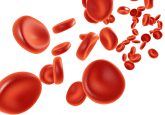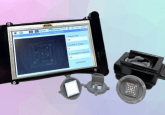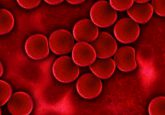Ask the Expert on Microsampling ¦Christopher James (AMGen, Inc.)

 Christopher A James, PhD, is a Director in the Department of Pharmacokinetics and Drug Metabolism at AMGen, Inc. He received his PhD from London University, working on the bioanalysis and pharmacokinetics of oncology drugs. In his current role, he supervises the development and application of LC–MS bioanalytical methods for small molecule, peptide and large molecule drugs to support discovery, GLP and early clinical studies. Throughout his career, he has been extensively involved with all aspects of bioanalysis including sample preparation, automation, LC–MS/MS, microsampling, and method validation. He has held leadership positions in a number of innovator companies working in the UK, Italy and USA. He has authored or coauthored over 40 publications and 5 book chapters on bioanalytical topics.
Christopher A James, PhD, is a Director in the Department of Pharmacokinetics and Drug Metabolism at AMGen, Inc. He received his PhD from London University, working on the bioanalysis and pharmacokinetics of oncology drugs. In his current role, he supervises the development and application of LC–MS bioanalytical methods for small molecule, peptide and large molecule drugs to support discovery, GLP and early clinical studies. Throughout his career, he has been extensively involved with all aspects of bioanalysis including sample preparation, automation, LC–MS/MS, microsampling, and method validation. He has held leadership positions in a number of innovator companies working in the UK, Italy and USA. He has authored or coauthored over 40 publications and 5 book chapters on bioanalytical topics.
In this ‘Ask the Expert’ feature we will be discussing recent developments in microsampling with some of the leading experts in the field. We will discuss the various microsampling techniques including advantages and challenges faced by bioanalysts when applying these methods.
In the third installment of this feature, Christopher James a director at Amgen Inc discusses with us some of the advances in microsampling techniques in recent years, including some of the main hurdles faced by experts.
Microsampling techniques (DBS/VAMS™, capillary and liquid microsampling) have gained growing interest over the last couple of years – do you think these advances will continue to draw in interest?
I believe there will continue to be a strong interest in microsampling based on the fundamental benefits offered: either very low sample volumes or major simplification of the logistics of sample collection and processing. Interest may also be spurred by the further development of innovative sampling devices, which overcome technical issues (such as hematocrit issues with DBS) or make the technique easier to use.
One of the earlier concerns for many practitioners and regulators regarded validation of microsampling techniques and trusting data. To what extent do you think this has this been overcome?
I think some concerns remain and have reduced the initial enthusiasm for widespread application of microsampling. In most cases these concerns can be overcome with additional validation experiments and, when needed, cross-validation with standard sampling methods. It is likely that microsampling-based methods will continue to require additional validation experiments to be performed. With regards to regulatory perspectives, a recent report [1] has highlighted successful interactions with regulatory authorities to address specific applications of microsampling in clinical programs. These interactions do not imply a blanket acceptance of the technique, but rather indicate that concerns about microsampling applications can be successfully addressed on a case-by-case basis with regulatory authorities.
Some companies have decided non-capillary microsampling was not the best approach for sampling and have adopted capillary microsampling. Do you agree with this conclusion?
For non-clinical studies, capillary microsampling techniques are attractive in providing an efficient way to process very small volumes of blood and also provide familiar and commonly used matrices for analysis (e.g. plasma or serum). However, while application of capillary microsampling may be practical in non-clinical studies where specialized staff are readily available, the additional complexity of capillary microsampling during collection and processing of blood samples make it unlikely that this technique could be widely applied to clinical studies.
Are microsampling techniques easily amenable to automation?
Given the different approaches to microsampling, it is difficult to give a single answer to this question, but the general answer is probably ’no‘. However, specific automation approaches have been developed, e.g. for automatic punching or elution from DBS cards, and systems for automated blood sample collection from rodents (e.g. Culex®). In addition, even without automation, some microsampling techniques such as VAMS™ can be simpler to perform than conventional equivalent processes.
Are additional considerations for matrix effects necessary for the microsampling technique?
Yes, for the methods involving dried whole blood, as this matrix is a more complex than plasma, and may cause additional matrix effects. Collection devices may also add additional materials into the extracted samples that could cause matrix effects, however, most methods now use untreated collection cards or devices that are less likely to add additional components to the samples. An equally important issue is the recovery of analytes from dried blood sampling devices. These sampling formats essentially take a liquid sample and create a solid sample from which it is potentially more difficult to ensure efficient extraction of an analyte. There are also some reports of extraction efficiency changing as dried blood samples are stored.
What have been the most exciting developments in microsampling techniques in recent years?
The most exciting aspect has been the widespread interest in the technique and the willingness to innovate, both in the bioanalytical community and also from suppliers of sample collection devices and equipment. Some examples are novel devices for sample collection (e.g. VAMS™) and equipment for automated elution of samples directly from DBS cards into an LC–MS system.
What do you think remains the greatest challenge to microsampling?
There are technical and regulatory challenges, as well as the need to define the studies where microsampling provides the most benefit. Overall, the greatest challenge is that the initial enthusiasm for DBS microsampling has been replaced with a much more cautious approach which may slow adoption of microsampling, even when it would really provide a major benefit for the conduct of a study.
Do you think this is an entirely unresolvable issue?
Not completely. However, for specific situations and types of studies, I think there is already a good path to use microsampling methods, and that both technical challenges and regulatory hurdles can be overcome.
A couple of years ago, EBF (European Bioanalysis Forum) felt that DBS was not a competitive tool for routine general use in regulated bioanalysis. Do you think this has changed with VAMS™?
Yes, to some extent. VAMS™ clearly resolves one of the major issues (hematocrit effect) with DBS and adds the innovation that the volumetric sampling is effectively done at the time of sampling. However, VAMS™ does not overcome the fact that the analysis matrix is whole blood, that a solid sample needs to extracted instead of a liquid sample or that there is extensive experience of using plasma or serum samples as the default matrix for pharmacokinetic (PK) studies.
Do you believe microsampling techniques, particularly DBS/VAMS™ and capillary microsampling, will ever be universally accepted in the bioanalytical community or do you see them becoming reserved for more niche applications?
I do not foresee microsampling becoming the default sampling method for PK studies, but I do foresee microsampling techniques being accepted by the bioanalytical community as a ’tool in the toolbox’, especially for studies requiring low sampling volume or where logistic issues make conventional blood sampling less than optimal.
To what extent do you think regulatory hurdles limit the advancement and application of microsampling techniques in the bioanalytical community?
I think it may be unfair to blame regulators entirely for injecting an element of scientific scepticism, particularly with dried blood microsamples that inevitably introduce the potential for unique problems that would not occur with liquid samples. Sampling methods are a critical, but a small part of the overall process of drug discovery and development, where balancing novel with tried-and-trusted techniques is an issue for both innovator companies and regulators alike. Overcoming such perceived hurdles may also spur additional innovation in terms of collection devices, validation approaches and novel applications of microsampling.
How do you see microsampling techniques evolving over the next 5–10 years? What challenges do you think will remain or arise?
From a technical perspective, I think there is scope for the further development of novel sample collection devices. From a study design perspective, I hope we will see the logistic simplicity of microsampling increasingly applied in late-stage clinical studies to improve PK data generation by ‘decoupling’ collection of blood samples from clinical site visits. This would allow for samples to be taken at home, possibly by the patients themselves. This could enable wider participation in PK aspects of late-stage studies, and allow for collection of samples at time points that would be impractical in a clinic setting. From the patient’s perspective, this would avoid extended stays in the clinic, or return visits, solely for the collection of PK samples. Similar benefits could also be seen for biomarker analysis in blood, particularly as biomarkers are increasing becoming a critical part of the drug development.
Some in the bioanalytical community have pointed to sample homogeneity and sample manipulation as being the main concerns in liquid microsampling. To what extent do you agree with this? And is it enough to justify refraining from liquid microsampling?
I think there is a legitimate concern for the potential of non-homogeneity with non-venous (i.e. fingerprick) microsampling blood collection from human subjects [2]. However, I don’t think there is currently sufficient information to know if this is a general concern for drug bioanalysis, or a major issue for non-clinical studies. Certainly the blood sampling site should be considered in any bridging studies conducted to compare standard and microsampling techniques.
References
- Kothare PA, Bateman KP, Dockendorf M et al. An integrated strategy for implementation of dried blood spots in clinical development programs. AAPS J. 18(2) 519–527 (2016)
- Bond MM and Richards-Kortum RR. Drop-to-drop variation in the cellular components of fingerprick blood: Implications for point-of-care diagnostic development. Am J Clin Pathol. 144 885–894 (2015)
Read previous instalments of Ask the Experts on Microsampling featuring Tim Sangster, Craig Audler (Supelco/Sigma-Aldrich), and Stuart Kushon (Neoteryx) here.






